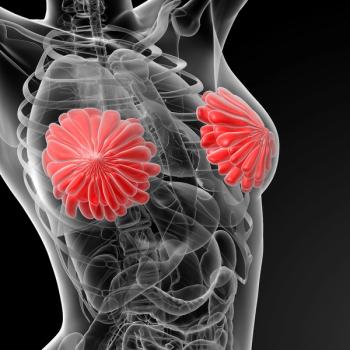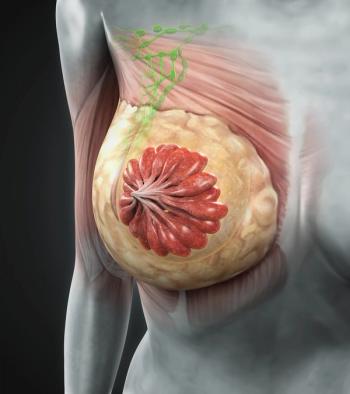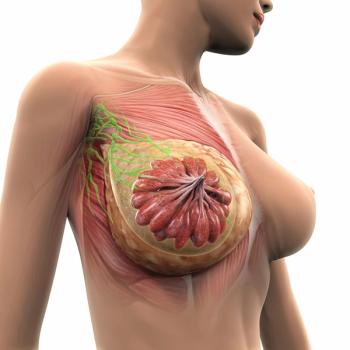
Higher doses of fulvestrant improve outcomes in advanced disease
Results from the CONFIRM trial found that a higher dose of fulvestrant was significantly more effective than a lower dose but did not lead to more toxicity, reported Angelo DiLeo, MD, who added “we anticipate that the 500-mg regimen will become the established dose for fulvestrant.”
SAN ANTONIO-Higher doses of the estrogen receptor antagonist fulvestrant (Faslodex) may increase treatment benefit without increasing toxicity, according to results from the international, randomized, double-blind phase III CONFIRM trial.
CONFIRM (Comparison of Faslodex in Recurrent or Metastatic breast cancer) found that fulvestrant 500 mg (F500) was significantly more effective than fulvestrant 250 mg (F250) in increasing time to disease progression, reported Angelo DiLeo, MD, of the Hospital of Prato, in Prato, Italy. “We anticipate that the 500-mg regimen will become the established dose for fulvestrant.”
As background, Dr. DiLeo noted that the efficacy of the approved dose, 250 mg/mo, is well established, but it is believed that outcomes might be further improved by increasing the dose to 500 mg (two 250-mg injections on days 1, 14, and 28, and every 28 days thereafter).
“We have seen data suggesting that estrogen receptor, progesterone receptor Ki67 are down-regulated in a dose-dependent manner with fulvestrant, and phase III preliminary data have suggested that 125 mg is inferior to 250 mg,” he explained. “Based on this background, we designed a phase III trial comparing two doses of fulvestrant to see if we could induce a more profound down-regulation of the ER receptor with the higher dose. We would like to increase the drug’s activity without worsening toxicity.”
CONFIRM compared F250 with F500 in postmenopausal women with estrogen receptor-positive advanced breast cancer recurring or progressing after prior endocrine therapy. The study recruited 736 women from 128 centers in 17 countries and randomized them to one of the two doses until disease progression (abstract 25).
The primary endpoint, time to progression (TTP), was significantly prolonged with F500, corresponding to a 20% reduction in risk of progression (P = .006), Dr. DiLeo said.
TTP was 6.5 months with F500 vs 5.5 months with F250 (P = .006). Progression was observed in 82% vs 85.8%, respectively. The treatment effect was consistent for all predefined subgroups. “It is clear that the 500-mg dose is more effective than 250 mg,” he said.
The overall response rate was similar for F500 and F250 (13.8% vs 14.6%) as was duration of clinical benefit (16.6 vs 13.9 months, respectively).
In this interim analysis, at which time 50% of patients have died, there was a trend for improved overall survival for patients treated with F500, but it has not reached statistical significance. Death was observed in 48.3% of the F500 group and 54.3% of the F250 group, corresponding to a 16% reduction in mortality risk (P = .091).
“It is not statistically significant, but our impression is that patients on 500 mg are surviving longer,” he added.
The higher dose did not result in more toxicity, and there was no evidence of dose-dependence for adverse events. “No relevant concerns were raised with the 500-mg dose,” he noted.
An exploratory analysis is under way to identify a subgroup that may derive the most benefit from dose escalation and from hormonal therapy in general. “We cannot rule out that the magnitude of benefit may be modulated by certain factors,” he said.
The correlative Trans-CONFIRM study will examine the concept of acquired versus de novo, or intrinsic, resistance to fulvestrant, which might be seen in approximately 30% of patients. “It is important to target the population that will benefit most from down-regulation of the estrogen receptor,” he said.
Newsletter
Stay up to date on recent advances in the multidisciplinary approach to cancer.
































































































